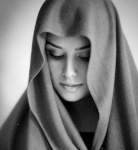Jasmine collar

 |  موضوع: Robert Bunsen العالم روبرت بنسن موضوع: Robert Bunsen العالم روبرت بنسن  3/4/2011, 23:05 3/4/2011, 23:05 | |
| [ندعوك للتسجيل في المنتدى أو التعريف بنفسك لمعاينة هذه الصورة]
Robert Bunsen
Robert Wilhelm Eberhard Bunsen (30 March 1811 – 16 August 1899) was a German chemist. He investigated emission spectra of heated elements, and with Gustav Kirchhoff discovered caesium (in 1860) and rubidium (in 1861). Bunsen developed several gas-analytical methods, was a pioneer in photochemistry, and did early work in the field of organoarsenic chemistry. With his laboratory assistant, Peter Desaga, he developed the Bunsen burner, an improvement on the laboratory burners then in use. The Bunsen–Kirchhoff Award for spectroscopy is named after Bunsen and Kirchhoff.
Life and work
Bunsen was born in Göttingen, Germany, as the youngest of four sons of the University of Göttingen's chief librarian and professor of modern philology, Christian Bunsen (1770–1837). After attending school in Holzminden, in 1828 Bunsen matriculated at Göttingen and studied chemistry with Friedrich Stromeyer, obtaining the Ph.D. degree in 1831. In 1832 and 1833 he traveled in Germany, France, and Austria, where he met Friedrich Runge (who discovered aniline and in 1819 isolated caffeine), Justus von Liebig in Gießen, and Eilhard Mitscherlich in Bonn.
University teacher
In 1833 Bunsen became a lecturer at Göttingen and began experimental studies of the (in)solubility of metal salts of arsenous acid. Today, his discovery of the use of iron oxide hydrate as a precipitating agent is still the best-known[clarification needed] antidote against arsenic poisoning. In 1836, Bunsen succeeded Friedrich Wöhler at the Polytechnic School of Kassel. Bunsen taught there for three years, and then accepted an associate professorship at the University of Marburg, where he continued his studies on cacodyl derivatives. He was promoted to full professorship in 1841. Bunsen's work brought him quick and wide acclaim, partly because cacodyl, which is extremely toxic and undergoes spontaneous combustion in dry air, is so difficult to work with. Bunsen almost died from arsenic poisoning, and an explosion with cacodyl cost him sight in his right eye. In 1841, Bunsen created the Bunsen cell battery, using a carbon electrode instead of the expensive platinum electrode used in William Robert Grove's electrochemical cell. Early in 1851 he accepted a professorship at the University of Breslau, where he taught for three semesters.
Black-and-white image of two middle-aged men, either one leaning with one elbow on a wooden column in the middle. Both wear long jackets, and the shorter man on the left has a beard.
Gustav Kirchhoff (left) and Robert Bunsen (right)
In late 1852 Bunsen became the successor of Leopold Gmelin at the University of Heidelberg. There he used electrolysis to produce pure metals, such as chromium, magnesium, aluminium, manganese, sodium, barium, calcium and lithium. A long collaboration with Henry Enfield Roscoe began in 1852, in which they studied the photochemical formation of hydrogen chloride from hydrogen and chlorine.
Bunsen discontinued his work with Roscoe in 1859 and joined Gustav Kirchhoff to study emission spectra of heated elements, a research area called spectrum analysis. For this work, Bunsen and his laboratory assistant, Peter Desaga, had perfected a special gas burner by 1855, influenced by earlier models. The newer design of Bunsen and Desaga, which provided a very hot and clean flame, is now called simply the "Bunsen burner".
There had been earlier studies of the characteristic colors of heated elements, but nothing systematic. In the summer of 1859, Kirchhoff suggested to Bunsen that he try to form prismatic spectra of these colors. By October of that year the two scientists had invented an appropriate instrument, a prototype spectroscope. Using it, they were able to identify the characteristic spectra of sodium, lithium, and potassium. After numerous laborious purifications, Bunsen proved that highly pure samples gave unique spectra. In the course of this work, Bunsen detected previously unknown new blue spectral emission lines in samples of mineral water from Duerkheim, Germany. He guessed that these lines indicated the existence of an undiscovered chemical element. After careful distillation of forty tons of this water, in the spring of 1860 he was able to isolate 17 grams of a new element. He named the element "caesium", after the Latin word for deep blue. The following year he discovered rubidium, by a similar process.
In 1860, he was elected a foreign member of the Royal Swedish Academy of Sciences.
Personality
Bunsen was one of the most universally admired scientists of his generation. He was a master teacher, devoted to his students, and they were equally devoted to him. At a time of vigorous and often caustic scientific debates, Bunsen always conducted himself as a perfect gentleman, maintaining his distance from theoretical disputes. He much preferred to work quietly in his laboratory, regularly enriching his science with useful discoveries. On a point of principle, he never took out a patent, despite the fact that his new battery and new laboratory burner would surely have brought him great wealth. Bunsen never married.
Retirement and death
When Bunsen retired at the age of 78, he shifted his work solely to geology and mineralogy, an interest which he had pursued throughout his career. He died in Heidelberg aged 88.
| |
|
KLIM

 |  موضوع: رد: Robert Bunsen العالم روبرت بنسن موضوع: رد: Robert Bunsen العالم روبرت بنسن  4/4/2011, 01:08 4/4/2011, 01:08 | |
| | |
|
Jasmine collar

 |  موضوع: رد: Robert Bunsen العالم روبرت بنسن موضوع: رد: Robert Bunsen العالم روبرت بنسن  5/4/2011, 21:08 5/4/2011, 21:08 | |
| | |
|
ازهار القدس

 |  موضوع: رد: Robert Bunsen العالم روبرت بنسن موضوع: رد: Robert Bunsen العالم روبرت بنسن  5/4/2011, 21:17 5/4/2011, 21:17 | |
| يسلموووووووووووووووووووووووو | |
|
Jasmine collar

 |  موضوع: رد: Robert Bunsen العالم روبرت بنسن موضوع: رد: Robert Bunsen العالم روبرت بنسن  28/4/2011, 04:20 28/4/2011, 04:20 | |
| | |
|
theredrose

 |  موضوع: رد: Robert Bunsen العالم روبرت بنسن موضوع: رد: Robert Bunsen العالم روبرت بنسن  28/4/2011, 04:23 28/4/2011, 04:23 | |
| بدي ترجمة ههههههههههههههههههههههه | |
|
Jasmine collar

 |  موضوع: رد: Robert Bunsen العالم روبرت بنسن موضوع: رد: Robert Bunsen العالم روبرت بنسن  28/4/2011, 06:01 28/4/2011, 06:01 | |
| ههههههههههههههه هو عالم كيميائي اشهر اكتشافاته لهب بنسن و عنصر الراديوم | |
|





